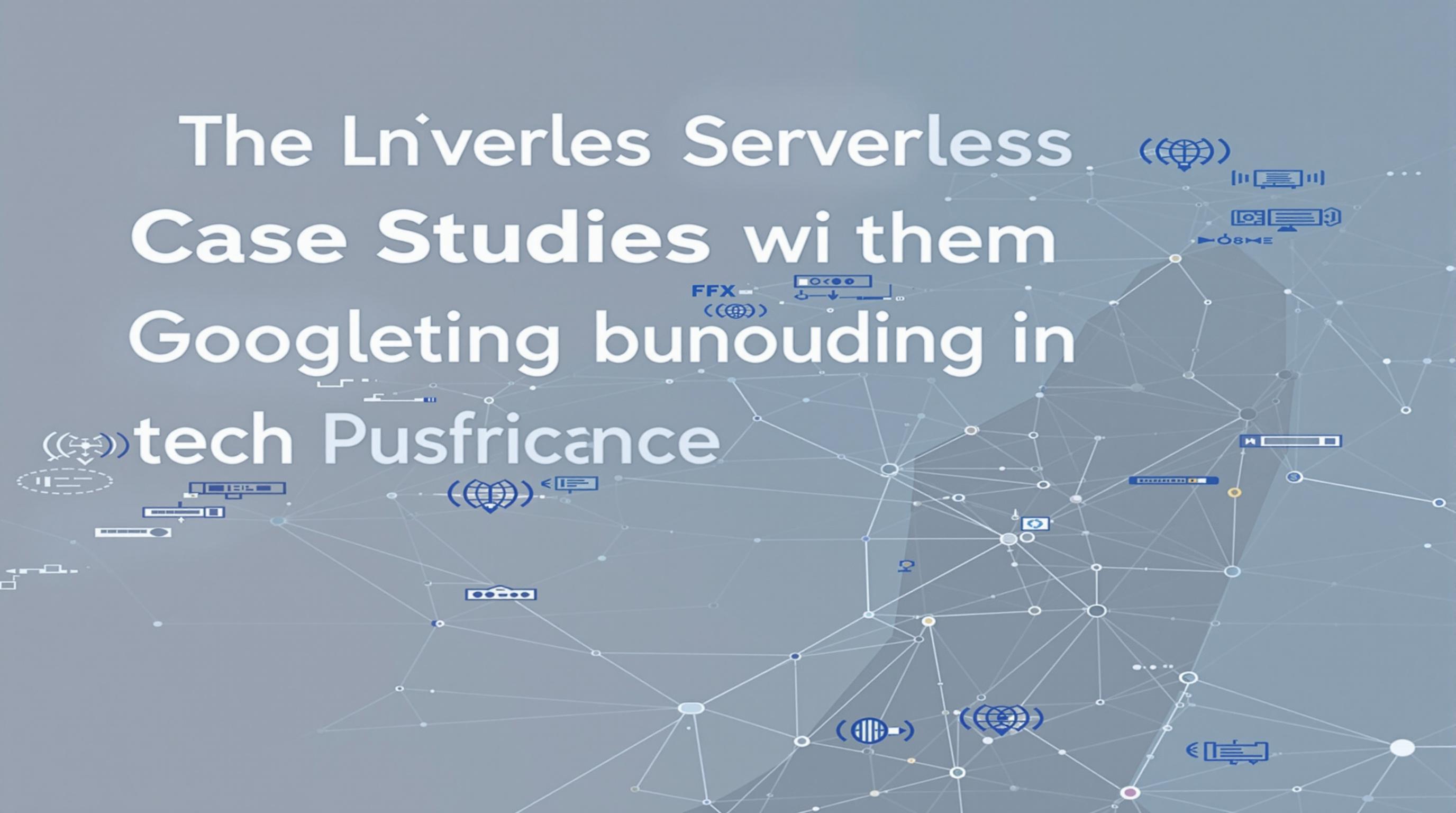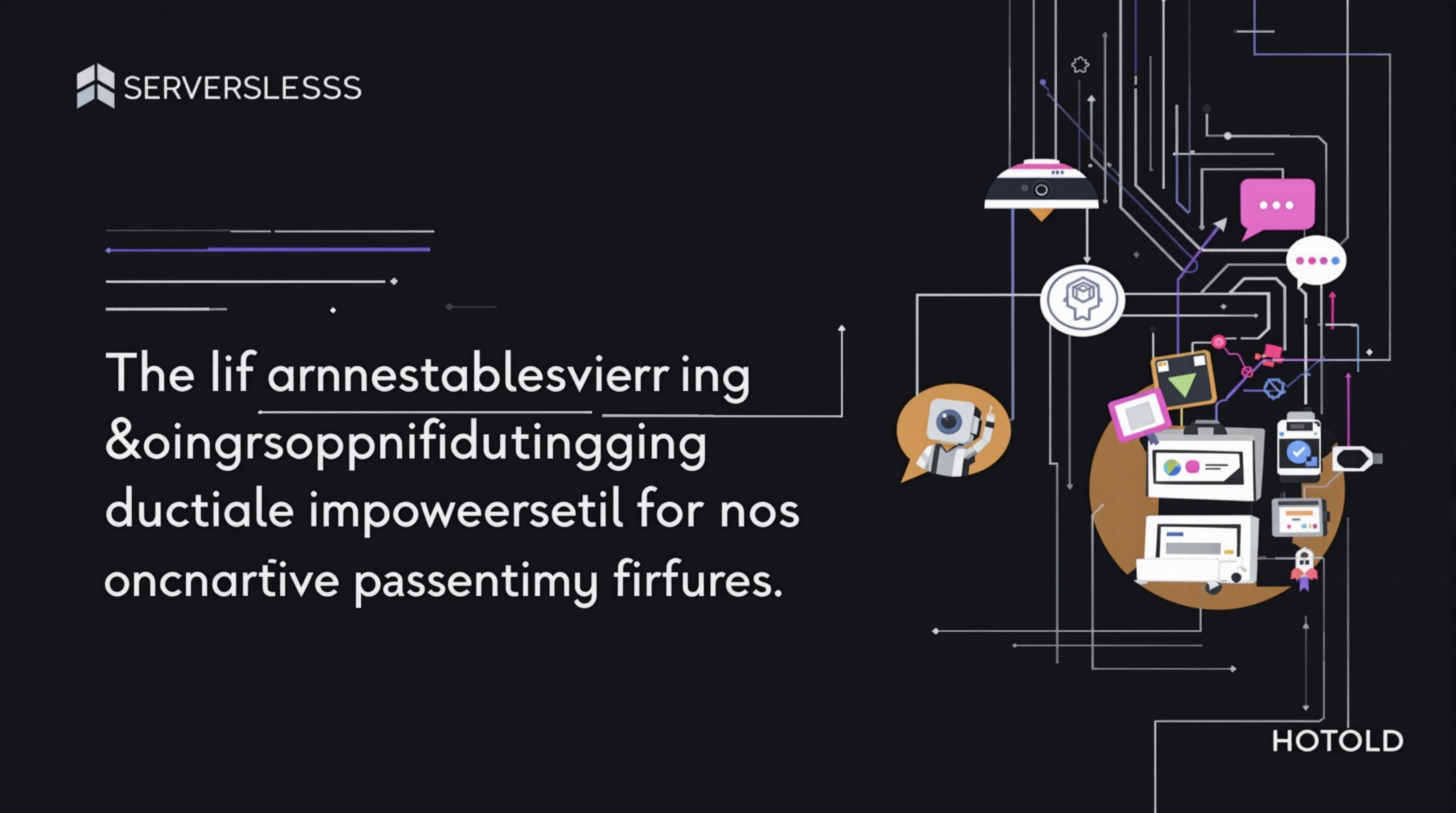Related Articles
- Uncharted Realms: Unveiling Serverless’ Role in Revitalizing Local Economies and Microbusiness Ecosystems
- Unearthing Surprising Synergies: How Serverless Solutions are Reinventing Events and Experiential Marketing Strategies
- Serverless Beyond the Cloud: Unpacking Its Role in Wildfire Management and Ecological Restoration Efforts
- Harnessing Digital Detox: Unplugging to Unleash Creative Energy and Ignite Workplace Performance
- The Surprising Role of Aroma: How Scents Can Unleash Hidden Productivity Boosts in Your Workspace
- Unlocking the Power of Serendipity: How Chance Encounters Can Enhance Team Productivity and Innovation
7 Innovative Serverless Case Studies Enhancing Security Protocols and Strengthening Cyber Resilience in Tech Infrastructure
7 Innovative Serverless Case Studies Enhancing Security Protocols and Strengthening Cyber Resilience in Tech Infrastructure
7 Innovative Serverless Case Studies Enhancing Security Protocols and Strengthening Cyber Resilience in Tech Infrastructure
Introduction
In the rapidly evolving world of technology, organizations are increasingly recognizing the importance of cybersecurity and resilience against potential threats. Serverless computing has emerged as a transformative approach that allows companies to focus on development and innovation while outsourcing infrastructure management. This article explores seven case studies that highlight how serverless architectures have improved security protocols and bolstered cyber resilience in various industries.
These case studies illustrate the real-world application and benefits of serverless technology in addressing security challenges. By leveraging the capabilities of cloud providers, organizations can implement advanced security measures, streamline incident response, and ultimately foster a more robust tech infrastructure. The discussion to follow analyzes these case studies, showcasing the effectiveness of serverless computing in enhancing security.
As threats continue to become more sophisticated, understanding the intersection of serverless technology and cybersecurity is crucial. By examining the successes of various organizations, businesses can gain insights into best practices and strategies for securing their own infrastructures, potentially transforming their approach to cyber resilience.
Case Study 1: Capital One's Data Breach Response
Capital One experienced a significant data breach that compromised over 100 million customer records. In response, the company swiftly re-evaluated its infrastructure and adopted a serverless architecture to improve its security posture. By migrating to AWS Lambda, Capital One leveraged built-in security features, such as fine-grained access control and serverless security monitoring tools, which significantly enhanced its data protection capabilities.
This transition not only streamlined their operations but also provided better visibility into their data usage and potential vulnerabilities. Serverless computing allowed Capital One to efficiently manage its security protocols while focusing on the development of new applications. The result was a more agile and responsive security model that mitigated risks and reduced the likelihood of future breaches.
Ultimately, the transition to serverless architecture proved to be a pivotal component of Capital One’s recovery plan. Through a combination of proactive monitoring and advanced security frameworks, the company was able to strengthen its cybersecurity measures and restore customer trust following the breach.
Case Study 2: Netflix's Automated Threat Detection
Netflix is renowned for its robust cybersecurity strategy, which includes serverless functions to enhance its threat detection capabilities. By deploying AWS Lambda functions, Netflix automated the analysis of network traffic and user behavior to identify anomalies or possible threats. This innovative approach allows rapid response times, reducing the risk of successful cyberattacks significantly.
The serverless model not only scales seamlessly with user demand but also allows Netflix to concentrate on developing new features while trusting the cloud provider to manage underlying security protocols. This integration ensures that security measures are continuously updated in line with evolving threats, thereby maintaining a proactive defense posture.
Furthermore, the automated threat detection system gives Netflix insight into potential vulnerabilities, enabling it to address weaknesses before they can be exploited. By effectively leveraging serverless technology, Netflix demonstrates how organizations can achieve impressive levels of security and cyber resilience in complex tech infrastructures.
Case Study 3: Airbnb's Secure API Management
Airbnb faced challenges with securing its APIs and ensuring that customer data remained confidential. The company adopted a serverless architecture utilizing AWS API Gateway and AWS Lambda, which allowed for enhanced security measures such as authentication, authorization, and data validation through built-in services. This transition not only reinforced security but also facilitated more efficient management of API traffic.
By making use of serverless technology, Airbnb reduced its attack surface, as sensitive code and data handling operations were confined within Lambda functions, minimizing exposure. Additionally, the API Gateway provided real-time protection against threats such as SQL injection and cross-site scripting, which further strengthened the overall security framework.
This approach enabled Airbnb to maintain a high level of security without compromising performance. In the competitive landscape of the hospitality industry, leveraging serverless computing showcased Airbnb's commitment to ensuring user safety while fostering growth and innovation.
Case Study 4: Slack's Enhanced User Security
Slack, the popular communication platform, recognized the need to enhance user security across its application. To address these concerns, Slack implemented a serverless infrastructure to deploy security features such as encryption and authentication protocols. By leveraging Lambda functions, the company could quickly validate user credentials and manage security tokens, significantly improving the user experience while strengthening overall security.
This shift to a serverless model provided Slack with the flexibility to scale security operations in line with growth. As new vulnerabilities emerged, the company could rapidly deploy security patches and updates without requiring extensive downtime or resource allocation.
Moreover, the granular control afforded by serverless functions allowed Slack to customize its security measures based on unique user needs, ensuring that sensitive information remained protected without hindering accessibility. In adopting serverless computing, Slack effectively demonstrated how organizations can enhance security while maintaining an efficient and user-friendly experience.
Case Study 5: eBay's Fraud Detection System
eBay harnessed the power of serverless technology to revamp its fraud detection system. By utilizing AWS Lambda in conjunction with machine learning models, eBay developed a highly effective mechanism to analyze transaction data in real-time and flag potentially fraudulent activities. This proactive approach allowed the company to mitigate losses and protect its users from scams and identity theft.
Serverless computing enabled eBay to scale its fraud detection capabilities seamlessly, processing large volumes of transactions with minimal latency. As the platform grew, so too did the sophistication of its security measures, which remained adaptable to emerging threats.
Through this innovation, eBay not only enhanced its fraud detection efforts but also significantly improved user trust and satisfaction. The advancements underscore the effectiveness of serverless architectures in bolstering security protocols and ensuring a safer online marketplace.
Case Study 6: Adobe's Secure Document Sharing
Adobe implemented serverless solutions to enhance the security of its document-sharing services. By integrating AWS Lambda for backend operations, Adobe improved its document encryption practices and established robust authentication measures to safeguard user data. The serverless approach allowed for the seamless execution of complex security requests embedded within user workflows.
This transformation not only fortified the security of document sharing but also streamlined processes that users rely on for collaboration. As document security becomes paramount in today’s digital landscape, Adobe's proactive approach reflects a commitment to protecting sensitive information without sacrificing usability.
Furthermore, the scalability of serverless computing ensures that Adobe can maintain high-security standards while accommodating growing user demands. This case study serves as a prime example of how leveraging serverless technology can empower organizations to enhance their cybersecurity frameworks effectively.
Case Study 7: Shopify's User Account Protection
Shopify, a leading e-commerce platform, recognized the importance of protecting user accounts against unauthorized access. By implementing a serverless framework, Shopify utilized AWS Lambda for improved login security via multi-factor authentication and verification processes. This move allowed the company to detect suspicious login attempts and respond promptly, enhancing user trust.
The serverless infrastructure enabled Shopify to implement scalable security measures that protected accounts without compromising performance. Fast response times are crucial in the realm of e-commerce, where user experience directly impacts business success.
Shopify's emphasis on cybersecurity demonstrates how serverless technologies can provide flexible and efficient solutions for protecting sensitive user information. As e-commerce continues to expand, organizations must prioritize security, and Shopify's case serves as a testament to effective practices that other companies can emulate.
Conclusion and Future Implications
As cybersecurity threats continue to evolve in complexity, the adoption of serverless architecture provides organizations with innovative solutions to strengthen their security protocols and enhance cyber resilience. The showcased case studies illustrate how various companies successfully leveraged serverless technology to address their unique security challenges while improving operational efficiency.
By implementing advanced security measures such as automation, real-time analysis, and adaptive protocols, organizations can not only safeguard their resources but also develop a proactive security culture. The real-time nature of serverless functions contributes to more agile incident response capabilities and enables organizations to maintain consumer trust amid growing concerns about data protection.
In conclusion, serverless computing presents an opportunity for businesses to rethink their approach to cybersecurity. By adopting lessons learned from these case studies and investing in serverless architecture, organizations can create a more resilient tech infrastructure that is equipped to withstand future challenges.




